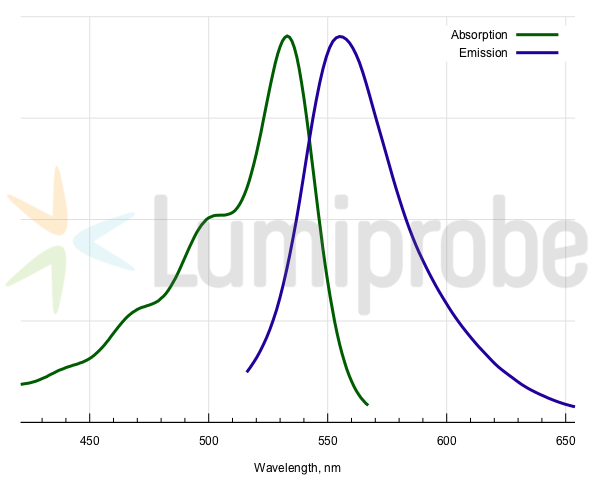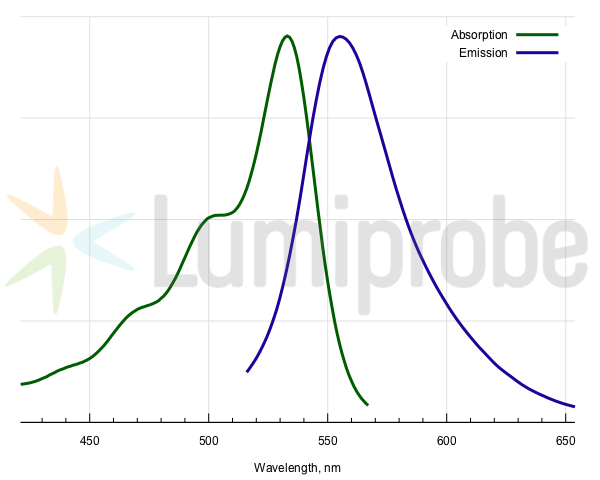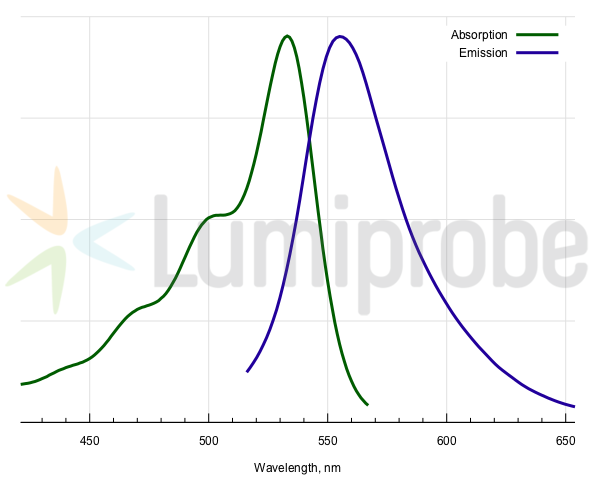JOE磷酰胺, 6-异构体, 5g
Lumiprobe Corporation是美国一家高品质生物技术公司,专业提供分子生物学研究用的活性荧光染料。主要产品有:活性染料(ReactiveDye)和SYBRGreen I染料,定制合成荧光双标记引物。产品主要应用:点击化学(CLickChemistry)、蛋白质组学研究中的双向荧光差异凝胶电泳(2DDIGE)和实时荧光定量PCR(ReaLtimePCR)。Lumiprobe是通过ISO 9001认证的生命科学应用标准和定制试剂制造商。
CYT-216
Somatomedin C, IGF-I, IGFI, IGF1, IGF-IA MGF.
The somatomedins, IGFs, comprise a family of peptides that play important roles in mammalian growth and development. IGF1 mediates many of the growth-promoting effects of GH. Early studies showed that GH did not directly stimulate the incorporation of sulfate into cartilage, but rather acted through a serum factor, termed ‘sulfation factor,’ which later became known as ‘somatomedin. Three main somatomedins have been characterized: somatomedin C , somatomedin A , and somatomedin B.
IGF1 Human Recombinant produced in E.Coli is a single, non-glycosylated, polypeptide chain containing 70 amino acids and having a molecular mass of 7.6kDa.
IGF-1 is purified by proprietary chromatographic techniques.
The protein was lyophilized from a concentrated solution in PBS, pH 7.0.
Lyophilized IGF1 although stable at room temperature for 3 weeks, should be stored desiccated below -18°C. Upon reconstitution IGF1 should be stored at 4°C between 2-7 days and for future use below -18°C.
For long term storage it is recommended to add a carrier protein .
Please prevent freeze-thaw cycles.
Greater than 97.0% as determined by:
Analysis by RP-HPLC.
Analysis by -PAGE.
The biological activity was determined by the cell proliferation assay using serum free human MCF-7 cells in <2ng/ml, corresponding to a Specific Activity of >5.0 x 105IU/mg.
Publication: Journal of Endocrinology 202, 287–297.
Link: http://joe.endocrinology-journals.org/content/202/2/287.full.pdf
Application: support spermatogenesis in an androgen-independent manner
2.Title:Suppression of Anoikis by SKP2 Amplification and Overexpression Promotes Metastasis of Esophageal Squamous Cell Carcinoma .
Publication:doi: 10.1158/1541-7786.MCR-08-0092 Mol Cancer Res January 2009 7; 12
Link:http://mcr.aacrjournals.org/content/7/1/12.full
3.Title:MECHANISMS OF BIOMATERIAL MEDIATED FIBROTIC RESPONSES AND STRATEGIES TO IMPROVE TISSUE REACTIONS TO BIOMATERIAL IMPLANTS.
Publication:THE UNIVERSITY OF TEXAS AT ARLINGTON
May 2010
Link:http://dspace.uta.edu/bitstream/handle/10106/4918/Thevenot_uta_2502D_10646.pdf?sequence=1
IGF stands for INS like growth factors, which are proteins that have a high similarity to INS. They are part of a complicated process that uses cells to communication with the physiologic environment around them. IGF’s complex system is often called the ‘axis’. This consists of:
● Two cell-surface receptors
● Two ligands
● A family of six high-affinity IGF-binding proteins.
● Proteases.
The Effect IGF Has On The Body
Many unique tissue types express the IGF-1 receptor, and the effects can vary. It induces the survival of neurons, may catalyse skeletal muscle hypertrophy by inducing protein synthesis, and by blocking muscle atrophy. It works as a protector for cartilage cells, and may work to be an anabolic factor for the bones. When used in high concentrations, it can activate the INS receptor, and can even complement the effects that INS has on the body.
Diseases And IGF
Diseases and IGF are closely related, and a number of them can be affected. The INS IGF axis is thought to have an effect on aging, with an increased life span shown in fruit flies when used in studies.
It is also important to note the crucial role that IGF plays in cancer and diabetes – IGF- 1 has been shown to stimulate growth in both prostate and breast cancer cells. The degree of risk that IGF-1 poses is up for debate, and many scientists are not in agreement. IGF has also shown to have the ability to decrease blood glucose levels, although not quite as effective as INS.
How Was IGF Discovered?
Investigators began studying the effects of biological substances on cells and tissues outside the body when IGFs were discovered. The name is self explanatory in the fact that IGF performs INS actions in some tissues, but is less potent than INS at decreasing blood sugar. Its fundamental action is to stimulate growth, whether that be within the epidermal growth factor or the nerve growth factor.
What’s The Difference Between IGF-1 And IGF-2?
The two types of IGF are IGF-1 and IGF-2. Although the names are similar, the specific actions that they take are different – they bind and activate completely difference receptors. The major actor in them both is the effect that they have on cell growth. Most of the actions of the pituitary GH are mediated by IGFs, but predominantly IGF-1. GH works to stimulate many tissues within the body, especially the liver which then secretes IGF-1. This then causes hypertrophy, or in layman’s terms, an increase in cell size, as well as hyperplasia which is an increase in the number of cells.
The IGF-1 concentration will increase during childhood and hit peak during puberty, but will then decrease afterwards, as does the hormone secretion itself. It has been proven that children and adults with a deficiency of the GH have low serum IGF-1 concentrations when put in comparison with others in the same age range. Patients who have conditions like acromegaly have been shown to have increased serum IGF-1 concentrations. The production of IGF-2 is less dependent on the secretion of GH than IGF-1, and is much less important for stimulating linear growth.
Also referred to as Somatomedin C, the IGF1 protein is encoded in humans as the IGF1 gene. Molecularly, IGF-1 does share similarities with INS and has a number of important roles in the body. For instance, it is a main part of childhood growth and during the later stages of adult life, creates anabolic impacts.
Structure
Made up of three helical segments, these IGF-1 structures are connected by the C-region. This is a 12-residue linker. Studies have shown that the dynamic structure of this protein is similar to INS however there is very little evidence of structural definition in the C-region. The C-region has been shown through studies to extend away from the IGF-1 core and has residues that are involved with receptor binding.
Function
Studies have shown that IGF1 does cause the somatic growth in fetal mammals. Somatic growth in postnatal animals is also achieved through interactions with the GH and IGF-1. If IGF-1 is overexpressed, then it causes the malignant change of cultured cells. Increased levels of IGF-1 have been seen in a variety of tumors in the human body. Furthermore, other research has shown that down regulations of IGF-1 protein can actually reverse the impact on tumor cells. Indeed, it could even make these cells sensitive to programmed cell death. Investigations into this type of function has lead to IGF-1 being targeted as a key possibility for developing anti tumor agents.
Clinically, there are various diseases that are characterized by an inability to either respond to or create IGF-1. An example of this would be Laron dwarfism. In this case, treatment using a GH is not effective due to the fact that there is a lack of GH receptors present in the body. Patients suffering from this condition will typically have IGF-1 levels below three SD. Interestingly, people suffering from these conditions are less likely to develop conditions such as diabetes and cancer.
Mechanism
IGF-1 functions mainly as a mediator for the impact of GH. This hormone is made in the anterior pituitary gland. Once created it is released into the bloodstream. Eventually it reaches the liver where it triggers the production of IGF-1.
IGF-1 causes growth-promotion in virtually every part of the body including cells in the lungs, skin, bone, kidney liver and many more as well as providing, INS-like effects. Beyond replicated the impact of INS on the body, the protein is also capable of regulating cellular DNA synthesis.
Interactions
IGF-1 interact with each of the seven IGF-1 binding proteins or IGFBPs. This includes IGFB1, IGFBP2, IGFBP3, IGFBP4, IGFBP5, IGFBP6 and IGFBP7. However, it’s important to be aware that some are inhibitory. Two examples of this would be IGFBP-5 and IGFBP-2. Both will bind IGF-1 at an affinity higher than it binds its own receptor. As such, serum levels of these two will actually lower the activity of IGF-1.
Research is constantly ongoing into the function and impact of IGF-1 on the processes in the human body and it’s possible use to treat diseases like cancer.
JOE phosphoramidite, 6-isomer,用于寡核苷酸合成的 JOE 亚磷酰胺,纯 6-异构体 (6-JOE)。
| 货号 | 规格 | 价格 | 货期 |
|---|---|---|---|
| 12160 | 100 mg | – | in stock |
| D2160 | 250 mg | 170.00$ | 10 days |
| F2160 | 1 g | 590.00$ | in stock |
| G2160 | 5 g | 2290.00$ | in stock |
| H2160 | 10 g | 3390.00$ | in stock |
| K2160 | 20 g | please inquire | 10 days |
JOE phosphoramidite for oligonucleotide synthesis, pure 6-isomer (6-JOE).
Fluorescent dye JOE is a fluorescein derivative containing two chlorine atoms and two methoxy groups. Its absorption and emission maxima are at 503 nm and 525 nm, respectively. By its spectral characteristics JOE is found in between FAM and TAMRA/ROX; therefore, this fluorophor is commonly used for multiplex detection, including that during DNA sequencing.
Our catalog also contains JOE phosphoramidite, 5-isomer. We compared qPCR probes containing different JOE isomers (5-JOE and 6-JOE) and did not find any significant differences between them.
用于寡核苷酸合成的 JOE 亚磷酰胺,纯 6-异构体 (6-JOE)。
荧光染料 JOE 是一种含有两个氯原子和两个甲氧基的荧光素衍生物。 其吸收和发射最大值分别为 503 nm 和 525 nm。 根据其光谱特性,JOE 介于 FAM 和 TAMRA/ROX 之间; 因此,这种荧光团通常用于多重检测,包括 DNA 测序期间的检测。
我们的目录还包含 JOE 亚磷酰胺,5 异构体。 我们比较了含有不同 JOE 异构体(5-JOE 和 6-JOE)的 qPCR 探针,并没有发现它们之间有任何显着差异。
Coupling: 6 minutes
Deprotection: standard conditions using ammonium hydroxide; deprotection time depends on oligonucleotide composition and nucleobase protecting groups (deprotection for 17 h at 55 °С removes all protecting groups from standard nucleobases). AMA (solution of 30% ammonium hydroxide/40% aqueous methylamine 1:1 v/v) can be used with ~5% of non-fluorescent side product forming. To avoid formation of the side product, start deprotection with ammonium hydroxide (30 min at room temperature), then add an equal volume of 40% aqueous methylamine and continue deprotection as required with AMA (e.g. 10 min at 65 °C).
耦合:6 分钟
脱保护:使用氢氧化铵的标准条件; 脱保护时间取决于寡核苷酸组成和核碱基保护基团(在 55°С 脱保护 17 小时会去除标准核碱基上的所有保护基团)。 AMA(30% 氢氧化铵/40% 甲胺水溶液 1:1 v/v 的溶液)可用于形成约 5% 的非荧光副产物。 为避免形成副产物,用氢氧化铵开始脱保护(室温下 30 分钟),然后加入等体积的 40% 甲胺水溶液,并根据需要使用 AMA 继续脱保护(例如,在 65°C 下 10 分钟)。

Pure isomer 6-ROX NHS ester for amine labeling.
用于胺标记的纯异构体 6-ROX NHS 酯。
Cyanine5.5 NHS is far-red / near-infrared amine-reactive dye.
Cy5.5 NHS 是远红/近红外胺活性染料。
BDP R6G is a high performance borondipyrromethene fluorophore which is tuned to match excitation and emission channels of R6G dye.
BDP R6G 是一种高性能硼二吡咯亚甲基荧光团,经过调整以匹配 R6G 染料的激发和发射通道。
| Appearance: | white solid |
| Molecular weight: | 972.88 |
| Molecular formula: | C48H60N3Cl2O12P |
| Solubility: | Good solubility in acetonitrile and DCM |
| Quality control: | NMR 1H and 31P, HPLC-MS |
| Storage conditions: | Storage: 12 months after receival at -20°C in the dark. Transportation: at room temperature for up to 3 weeks. Avoid prolonged exposure to light. Desiccate. |
| MSDS: | Download |
| Product specifications |
| Excitation/absorption maximum, nm: | 533 |
| ε, L⋅mol−1⋅cm−1: | 75000 |
| Emission maximum, nm: | 554 |
| Fluorescence quantum yield: | 0.61 |
| CF260: | 0.36 |
| CF280: | 0.28 |
| Diluent: | acetonitrile |
Oligonucleotide synthesis, Phosphoramidite, JOE,JOE 是一种呫吨染料,具有两个氯和两个甲氧基取代基的荧光素衍生物。 这种荧光团是寡核苷酸的有用标记。 其吸收和发射光谱位于 FAM 和 TAMRA 之间。
| 货号 | 规格 | 价格 | 货期 |
|---|---|---|---|
| C1160 | 100 mg | – | 5 days |
| D1160 | 250 mg | 170.00$ | 5 days |
| F1160 | 1 g | 590.00$ | in stock |
| G1160 | 5 g | 2290.00$ | in stock |
| H1160 | 10 g | 3390.00$ | in stock |
JOE is a xanthene dye, fluorescein derivative possessing two chloro and two methoxy substituents. This fluorophore is a useful label for oligonucleotides. Its absorption and emission spectra are located between FAM and TAMRA.
The fluorophore can be introduced into oligonucleotide using this phosphoramidite. It tolerates standard ammonium deblock conditions. This product contains pure isomer of 5-JOE dye.
JOE 是一种呫吨染料,具有两个氯和两个甲氧基取代基的荧光素衍生物。 这种荧光团是寡核苷酸的有用标记。 其吸收和发射光谱位于 FAM 和 TAMRA 之间。
可以使用这种亚磷酰胺将荧光团引入寡核苷酸中。 它可以承受标准的铵解封条件。 本产品含有5-JOE染料的纯异构体。

Stock solution of dsGreen for Real-Time PCR, 100×
用于实时 PCR 的 dsGreen 储备溶液,100×
Sulfo-Cyanine5.5 azide is a derivative of water soluble far red emitting fluorescent cyanine dye. The azide group can be conjugated by either copper-catalyzed or copper free Click chemistry. The reagent possesses high aqueous solubility and hydrophilicity, and recommended for the labeling of biomolecules in aqueous environment.
Sulfo-Cy5.5 azide 是水溶性远红荧光花青染料的衍生物。 叠氮基可以通过铜催化或无铜点击化学进行缀合。 该试剂具有高水溶性和亲水性,推荐用于水环境中生物分子的标记。
Sulfo-Cyanine5.5 is a far red/NIR fluorophore possessing high hydrophilicity and aqueous solubility. The dye displays good brightness in far red region due to outstanding molar extinction coefficient. This is amine derivative which is reactive towards electrophiles. It can also be used for enzymatic transamination labeling.
Sulfo-Cy5.5 是一种远红/近红外荧光团,具有高亲水性和水溶性。 由于出色的摩尔消光系数,该染料在远红色区域显示出良好的亮度。 这是对亲电试剂有反应性的胺衍生物。 它也可用于酶促转氨标记。
| Appearance: | colorless solid |
| Molecular weight: | 972.88 |
| Molecular formula: | C48H60N3Cl2O12P |
| Solubility: | good in DCM, acetonitrile |
| Quality control: | NMR 1H, 31P, HPLC-MS (95%), functional testing |
| Storage conditions: | Storage: 12 months after receival at -20°C in the dark. Transportation: at room temperature for up to 3 weeks. Avoid prolonged exposure to light. Desiccate. |
| MSDS: | Download |
| Product specifications |
| Excitation/absorption maximum, nm: | 533 |
| ε, L⋅mol−1⋅cm−1: | 75000 |
| Emission maximum, nm: | 554 |
| Fluorescence quantum yield: | 0.61 |
| CF260: | 0.36 |
| CF280: | 0.28 |
| Diluent: | acetonitrile |
| Coupling conditions: | standard coupling, identical to normal nucleobases |
| Cleavage conditions: | ammonia, 2 h at room temperature |
| Deprotection conditions: | identical to protected nucleobases |
JOE azide, 5- isomer,JOE 叠氮化物,5- isomer,JOE 是一种荧光染料,在光谱的黄色区域发射。 荧光团与另一种氯化荧光素 HEX 染料的通道相匹配。JOE染料常用于qPCR; 使用点击化学可以实现寡核苷酸标记。 这是 JOE 的叠氮化物衍生物,用于 Click 化学,纯 5-异构体。
| 货号 | 规格 | 价格 | 货期 |
|---|---|---|---|
| 31130 | 500 uL, 10 mM/DMSO | please inquire | 10 days |
| A1130 | 1 mg | 110.00$ | in stock |
| B1130 | 5 mg | 210.00$ | in stock |
| C1130 | 10 mg | 310.00$ | in stock |
| D1130 | 25 mg | 410.00$ | in stock |
| E1130 | 50 mg | 695.00$ | in stock |
| F1130 | 100 mg | 1190.00$ | in stock |
JOE is a fluorescent dye with the emission in yellow region of the spectrum. The fluorophore matches channel of HEX dye, another chlorinated fluorescein.
JOE dye is often used in qPCR; oligo labeling can be achieved using Click chemistry. This is an azide derivative of JOE for Click chemistry, pure 5-isomer.
JOE 是一种荧光染料,在光谱的黄色区域发射。 荧光团与另一种氯化荧光素 HEX 染料的通道相匹配。
JOE染料常用于qPCR; 使用点击化学可以实现寡核苷酸标记。 这是 JOE 的叠氮化物衍生物,用于 Click 化学,纯 5-异构体。

BDP FL is a bright and photostable borondipyrromethene dye for fluorescein channel. This is a dye azide for Click Chemistry.
BDP FL 是一种用于荧光素通道的明亮且光稳定的硼二吡咯亚甲基染料。 这是一种用于 Click Chemistry 的染料叠氮化物。
Phosphoramidite modifier for the synthesis of oligonucleotides containing alkyne modification in the middle of the chain.
亚磷酰胺修饰剂,用于合成在链中间含有炔烃修饰的寡核苷酸。
Pure 6-isomer of tetramethylrhodamine (TAMRA) dye, azide derivative for copper-catalyzed and copper-free Click chemistry reactions with alkynes.
纯 6 异构体的四甲基罗丹明 (TAMRA) 染料,叠氮化物衍生物,用于与炔烃的铜催化和无铜点击化学反应。
| Appearance: | red solid 红色固体 |
| Mass spec M+ increment: | 586.1 |
| Molecular weight: | 587.37 |
| CAS number: | 1422178-11-7 |
| Molecular formula: | C26H20N4Cl2O8 |
| Solubility: | good in DMF, DMSO |
| Quality control: | NMR 1H, HPLC-MS (95%) |
| Storage conditions: | Storage: 24 months after receival at -20°C in the dark. Transportation: at room temperature for up to 3 weeks. Avoid prolonged exposure to light. Desiccate.
储存:收到后 24 个月,在 -20°C 避光保存。 运输:在室温下长达 3 周。 避免长时间暴露在光线下。 干燥。 |
| MSDS: | Download |
| Product specifications |
| Excitation/absorption maximum, nm: | 533 |
| ε, L⋅mol−1⋅cm−1: | 75000 |
| Emission maximum, nm: | 554 |
| Fluorescence quantum yield: | 0.61 |
| CF260: | 0.36 |
| CF280: | 0.28 |